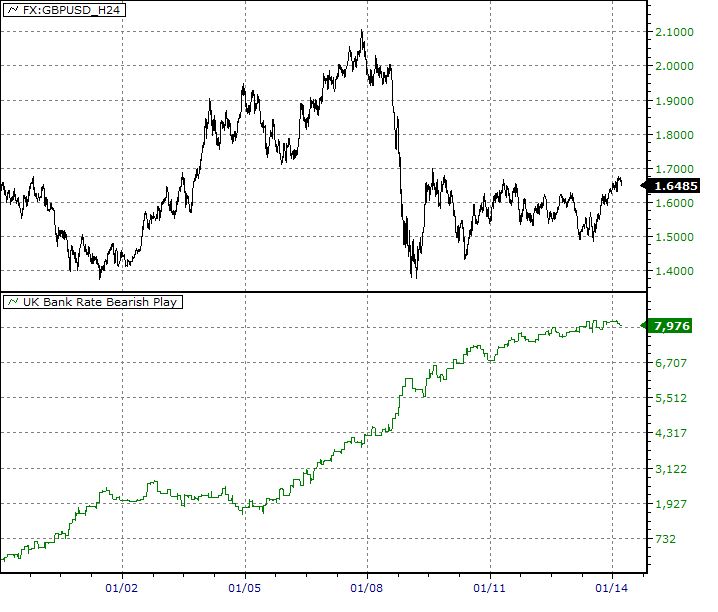Forex traders know that economic reports and central bank rate announcements are a time of volatility. Anticipation of the events is high and expectations build up on both sides of the currencies can lead to very good trading opportunities. Many professional traders prefer to engage these events with breakout play because of the uncertainties. However, not all such events are unpredictable. The United Kingdom Official Bank Rate Announcement is a classic example that trading edge can be found when the least number of people expected one.
A Highly Anticipated Event With A Fixed Schedule
Since 1997, Bank of England has scheduled its official bank rate to be announcement on the Thursday after the first Monday of the month. With the exception of a few special occasions leading to the announcement to take place on the Wednesday prior, it is a recurring event with predictable outcome. Predictable in the sense that it traps many traders on the wrong side of the market.
It is suffice to say that traders from all timeframes are put into a box to pit against each other up to the moment the announcements are made. It leads to British Pound consistently pushing lower into the announcements and climax right after. This is a simple and an exploitable edge.
A Simple Way To Capture The Move
To take advantage of the phenomenon all we have to do is to go short on the first few trading days of each month to capture the move. Following are the rules for a basic trading model to capture the bias:
1. Go short on the third trading day of the month at open. That is 5 pm Eastern Time in United States.
2. Hold onto the position until end of week after the UK Official Bank Rate announcement.
3. Skip January as several annual economic reports and World Economic Forum annual meeting happens in late January. Focus no longer on the regular interest rate event.
4. Skip April because another set of annual economic reports are released in the middle of this month. A focus on the more important economic data is expected.
Great Performance With Minimal Effort
The following chart is the performance of the system (net gain in pips) since 1999. 1 pip per transaction is deducted to account for slippage.

The model performs very well year after year even when British Pound was rising sharply from year 2002 to year 2007. Consistently performing at more than 60% winning rate with only one year of significant drawdown, it is a very impressive raw model by any standard.
The holding period can be reduced to, say, the day of the rate announcement or the day before the rate announcement. The decrease in duration only affects the net gain but winning rate stays about the same. This shows the overall stability of the bias.
While People Lead To Patterns, Structure Shapes The Bias
The example trading model I presented here illustrates an important point in trading system design. Pure data crunching to find historical bias in price behaviour is not necessarily an effective means in creating reliable trading systems. Non-structural biases come and go because they depend on the behavior of the traders who contributed to the historical price movements at the time. Since traders come and go all the time, price patterns varies.
Structural events like the interest rate announcement enforces a framework on the traders. Hence the bias in price behavior can last for a long time until the event has changed. In this case, until Bank of England chooses to reschedule the official bank rate announcement to middle of the month, it is likely that the bias presented here will continue to work for a long time.
Fooled By Structural Events
Understanding the concept above leads to an answer to the age old question, “why many intraday trading systems do not work consistency over time?”
The price driver of the bias around the bank rate announcement is a structural event. It only happens in the beginning of the month. For traders (and trading models) unaware of the bias. They would be led to believe that either they are on a roll (i.e. because of their skills) or being trashed (i.e. because of manipulations) every few weeks.
The truth is far simpler – their performances have been affected by the monthly event.
Simple awareness of the effect of structural biases can have profound impact on day traders whose focus is the intraday timeframes only. If they can incorporate the concept into their trading strategies, it can reduce unnecessary optimization, remove obscure trading rules and cleanse out their illogical trading beliefs.
Room For Improvements
There are many things that we can do to improve the raw trading model. After all, its job is to show us what structural bias is. By utilizing intraday data, one can improve the entries and exits with more favourable conditions. Money management rules can be applied to lock in profit in certain situations.
It will be the job of the readers to take the concept here to fit their trading styles.
= = =
Learn more about Chan’s work at daytradingbias.com




